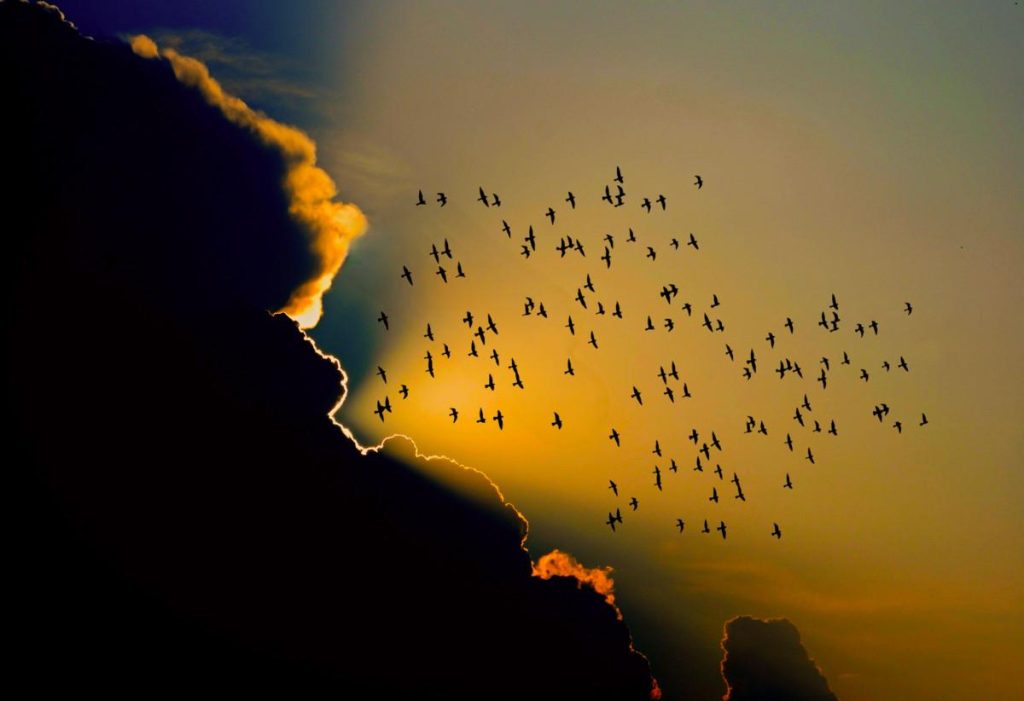Spectacular fireworks displays with their booms, crackles, and brilliant flashes of colour and patterns in the sky can be joyful experiences at which people marvel because we can anticipate what is coming. Animals (including our pets, livestock, and wildlife) don’t have the benefit of being able to anticipate the percussive explosions, sparks, and toxins from fireworks. Humans tend to be short-sighted of the fact that fireworks cause traumatic stress to animals, may lead to injuries or deaths, or can have long-term reproductive impacts. Fireworks also have a measurable lingering effect on ecosystems.
Animals, ecosystems and fireworks
Pet owners are often aware of the negative influence of fireworks: pets and companion animals exposed to fireworks can develop debilitating phobias or other behavioural problems. They may become lost or injured—again, sometimes fatally—when trying to escape. Some domesticated animals experience life-long anxiety and may damage property or themselves in reacting to fireworks. We clearly have a responsibility to mediate the trauma of fireworks on the animals that we own or manage.
We also have a broader responsibility for the impacts of fireworks on wildlife. Fireworks occur outdoors in areas that are habitat for hundreds of species. They occur at night when most are roosting or resting. Because fireworks cannot be predicted by wildlife, the sudden bursts of light and sound cause many wild animals to panic. Most will attempt to flee, some to hide, and all may abandon young that cannot keep up with a panicked flight.

Fireworks events are critically untimely when they overlap with seasonal nesting or migration. Using upward-facing radar to measure wildlife movements, scientists have recorded huge, panicked flights of thousands of birds reacting to New Year fireworks. Injuries or deaths may result when animals collide with each other and solid objects during an en masse flight. Less obvious physiological impacts may linger beyond the event night: physiological stress can affect breeding adults and the body weights of their offspring.
Even after the last firework has crackled into silence, the damage to the environment can linger on the landscape. Carbon particles, plastics, metal salts, and perchlorates (the compound that gives colour to fireworks) negatively affect air and water quality, penetrate the soil, and enter the food chain. Health data also show health effects to animals and humans, in particular respiratory distress. While we think of fireworks as aerial displays, associated sound waves may also have impacts on aquatic animals that have not yet been quantified.
What we need to consider
Technological creativity has brought about the best alternative to chemical pyrotechnics: programmed drone-based light shows that are choreographed to music and may even incorporate visual ‘interactions’ of light-based figures with skyline features (buildings, bridges, reflection in waterways), all without the percussion and without the pollution. Because the luminosity of drone-mounted LEDs is lower than pyrotechnic explosions, the disturbance to domestic and wild animals as well as sensitive humans is reduced. Drone-based light shows are more expensive and, yes, less intense than fireworks: no boom, less flash. Some viewers have critiqued them as boring.
Change from the familiar, or nostalgia from having grown up with fireworks (which have been around for centuries) can be challenging to shift. However, the evident trauma to animals and pollution to air, water, and land that underscore the fact that our human desires to be dazzled need to be mediated. We need to consider the negative impacts that real, chemical pyrotechnics fireworks have on the lives of animals, ecosystems, particularly air and water, and act with responsibility.
Further Reading
Bateman, P. W., L. N. Gilson and P. Bradshaw. 2023. Not just a flash in the pan: Short and long term impacts of fireworks on the environment. Pacific Conservation Biology 29(5): 396–401. doi.org/10.1071/PC22040.
Han, J. 2023. Crowd-pleasing fireworks are not so pleasing to the planet. https://earth.org/environmental-impact-of-fireworks/. Accessed on February 22, 2024.
Zerlenga, O., V. Cirillo and R. Iaderosa. 2021. Once upon a time there were fireworks. The new nocturnal drones light shows. img journal 4: 402–425. doi.org/10.6092/issn.2724-2463/12628.






